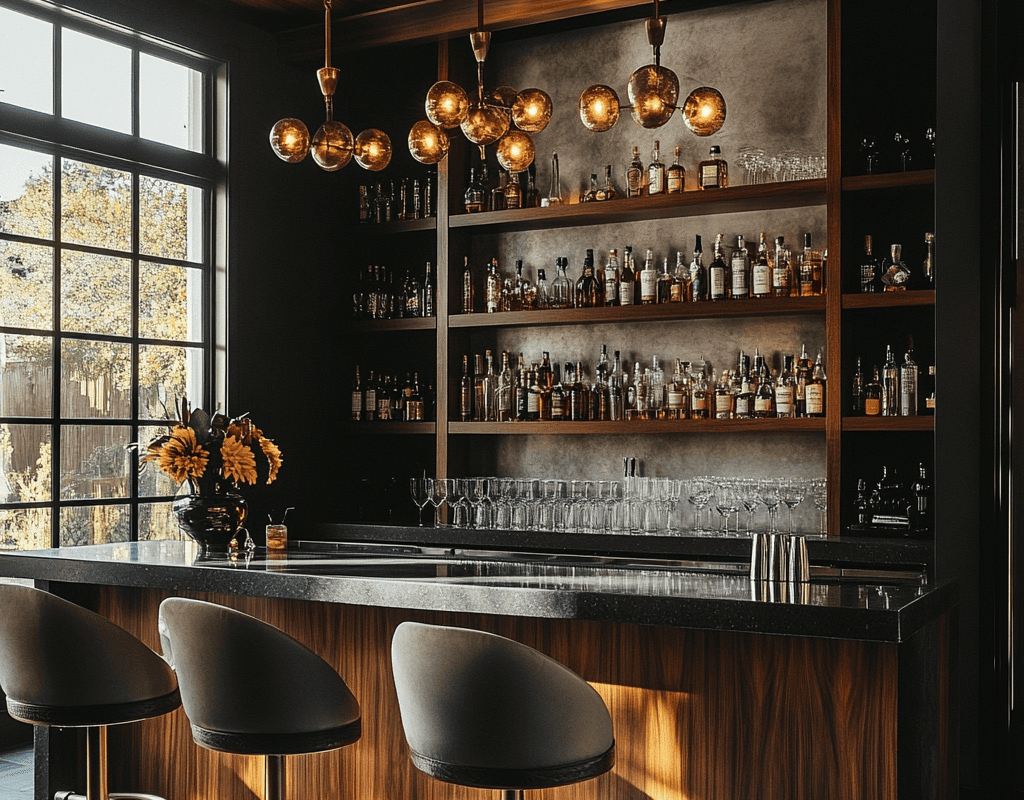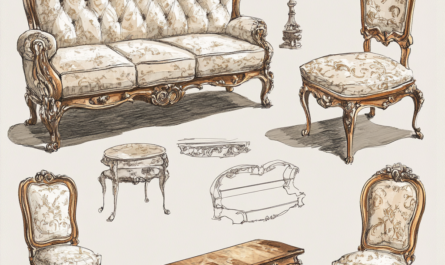A home bar area is not just a place to store bottles and glasses. It is a corner of style, atmosphere and aesthetics that reflects the character of the owner and invites to relax or have a pleasant conversation. To make the bar area look truly sophisticated, it is important to pay attention not only to the furniture and lighting, but also to the details that create the mood.
One of these elements is aromas. Noble smells enhance the impression, set the tone for the evening and make the space multi-layered at the level of perception. Scented accessories, designer perfumes and spot decoration help to transform an ordinary area with drinks into a full-fledged art space where you want to linger.
Style as the basis of bar aesthetics
Creating a bar area starts with the visual style. It can be classic, vintage, industrial or minimalist – the main thing is that it reflects individuality and creates the desired atmosphere. Materials, colors and shapes should be combined with each other and not stand out from the overall design of the house.
Wood, metal, glass and leather are the most common materials that help to give the bar sophistication and depth. Thoughtful lighting, open or closed shelves and decorative elements make the area not only functional but also visually attractive.
Here it is important to think through not only the arrangement of bottles and glasses, but also the overall ambience: where the bar will be located, whether it will be stationary or mobile, how it will fit in with the rest of the interior. Harmony is the key factor.
Style-setting details:
● Choice of materials (natural wood, brass, glass)
● Lighting with a warm tone or directional light
● Minimalism in accessories or, on the contrary, vintage accents
● Integration with the overall color palette of the room
Aromas as part of the bar atmosphere
Scents in the bar area play the same role as music – they are unnoticeable, but they set the mood. Scent can make the atmosphere more intimate, expensive or relaxing. The combination of scents with the theme of the bar works especially effectively: cocktail notes, woody accords, tobacco shades.
It is important that the aroma does not conflict with the drinks, but on the contrary, supports and enhances their impression. Rich and warm notes are well suited for an evening mood, while the daytime format requires something light, transparent and slightly playful.
The aroma can be added through diffusers, candles or sprays – each method gives a different degree of saturation. It is also worth remembering about personal aromas: the perfume of the bar owner or hostess also becomes part of the general background, especially in an intimate setting.
Suitable aromatic accents:
● Vanilla, leather, amber – for a feeling of coziness and depth
● Citrus, bergamot, mint – for an invigorating daytime background
● Vetiver, tobacco, spices – for evening elegance
● Coffee and chocolate notes – for gastronomic themes
Aroma accessories in design
In addition to the main scent, it is important to think about the visual presence of aromatic accessories. Beautifully decorated candles, designer aroma diffusers or vintage aroma lamps can become an integral part of the bar composition. They work not only as sources of scent, but also as decorative elements.
Many manufacturers produce entire lines of accessories that match the style of the interior – from industrial metal coasters to elegant glass vessels. Such details can be selected to match the theme of the bar, creating a complete look.
Proper placement of aroma elements is important for uniform distribution of scent. Candles are best placed at eye level, and diffusers are closer to air circulation points, such as near the entrance or near an area with high shelves.
Elements that will decorate the bar:
● Scented candles in ceramic or glass forms
● Decorative diffusers with black or wooden sticks
● Sprays for textiles – blankets, armchairs or bar stools
● Stylish stands for incense or aroma plates
Perfume as part of an evening look
When the bar area becomes part of an evening ritual, especially when entertaining guests, it is important to think about not only the atmosphere but also your personal scent. The owner’s perfume is a kind of signature, especially if the bar is played out as part of a personal space, rather than a formal corner.
An evening scent should be recognizable, persistent, but not aggressive. It is better to choose perfumes with time-release so that they leave a trail, and do not hit the nose from the first seconds. Such perfumes add confidence and create an aura of completeness around the owner.
Often, aromas match the notes of the main ingredients of the drinks: rum, vanilla, leather, smoke, cognac. This creates an elusive connection between what is in the glass and what is in the air. The harmony of smells enhances the impression of the meeting and of the host as a person with taste.
Examples of an evening perfume look:
● Light spices and musk – for intimate meetings
● Woody and leathery notes for a confident look
● Fougere and warm amber accords – for pairing with cocktails
● Slightly sweet gourmand notes for a soft, relaxing mood
Aroma as a ritual of welcoming guests
If the bar area is used not only for personal pleasure but also for receiving guests, the smell becomes part of the hospitality. It helps to immediately set the right tone for the evening, relax, charm or charge with mood. It can be a barely perceptible background or an accent that is remembered.
Perfume in this case works on the emotional level. For example, getting to know a new drink surrounded by a noble aroma is perceived as more refined. In addition, the smell is the first thing that is felt when entering a room, even before music or light.
This approach turns an ordinary dinner or cocktail party into an almost theatrical performance. Everything becomes part of the script: lighting, sound, taste and smell. For many, this is a way to surprise, to show attention to detail, to create a unique moment.
How to use fragrance for receiving guests:
● Start the diffuser 30 minutes before guests arrive.
● Add aroma spray to seating and textile areas
● Choose perfumes that continue the mood of the drinks
● Don’t overdo it – subtlety is more important than richness
How to Avoid Scent Overload
Sometimes the pursuit of perfection can play a cruel joke: too many scents that don’t go together correctly create chaos instead of coziness. The bar area is a place where balance is especially important. Too strong an aroma can spoil the perception of even the most exquisite drinks.
The main rule is moderation. It is better to have one well-chosen scent than three incompatible ones. Also, you should not use candles, diffusers and perfumes at the same time: the scents can interrupt each other or merge into a heavy background.
It is also important to consider the size of the room: the smaller the space, the easier it is for the aroma to fill it. In small areas, it is worth choosing light, “airy” aromas with an unobtrusive trail. And vice versa – space allows you to use more complex compositions.
Tips for balancing scents:
● Choose one main scent for the background
● Avoid additional sources if you use long-lasting perfumes.
● Test the scent on yourself and in the room before receiving guests.
● Ventilate the area between events to neutralize any residual odors.
A home bar area is an opportunity to create not just a place for drinks, but a full-fledged emotional zone of comfort, taste and aesthetics. Aromas, if chosen wisely, become an important part of this space, complementing the style, reflecting the character and creating a special aura.
Perfume accents are not an excess, but a thoughtful detail that works on a deep level. They can make an evening warm, a conversation heartfelt, and a meeting unforgettable. It all starts with the desire to do beautifully, and continues through attention to detail.
If you approach the design of the aromatic component of the bar area with taste, it will not only please the eye, but also leave an aftertaste – like a good cocktail.
Questions and Answers
No, but it is worth having 1-2 suitable compositions for different moods.
Diffusers are safer and more convenient, especially for long-term use.
Yes, if their notes overlap and do not conflict in intensity.




